Resources
Blog Authors
Blog Categories
Silver Sponsor
Resource Blogs
Reducing an Organization's Risk and Liability by Addressing the Entry
Mitigating risk and liability starts with controlling access to the entry points of a facility. In fact, a regulated mandate that is of major concern to the security professional is the requirement to restrict physical access to a building. Several regulatory standards specifically call out tailgating as a clear violation of compliance.
read more -->

Security Entrances and Active Shooter Preparedness
It’s unfortunate that one of the biggest topics in our industry today is “active shooter.” Once a rare event, it’s now in the news almost weekly and sometimes daily. To an organization, the impacts range from death and property damage to long-term disruption of business continuity.
Organizations today have to take the threat seriously and deploy a number of tactics to get ahead of an active shooter event. These strategies include, but are not limited to, conducting more effective employee screenings and providing counseling; preparing emergency kits; performing safety drills on a regular basis; and rolling out physical security measures to deter, detect or prevent an active shooter from infiltrating and moving throughout the building.
read more -->

Voice Identification: Not Just for the Chatty Kathy
Learn the meaning of micro-articulometry. A term for the technology used to deduce human profile parameters, employing Artificial Intelligence (AI) to discover micro-patterns (or micro-signatures) contained in speech. And how this technology is coupling with security.
read more -->

The State of Security Video Analytics
Examines the current state of video analytics technology
& considerations for modern deployment.
read more -->

PSIA Primer
In my last column, I provided thoughts on the ONVIF specification effort, which was initiated in 2008 by Axis, Bosch, and Sony. This month, I'll turn my attention to another effort to drive system interoperability. Also founded in 2008 by over 20 companies, including Cisco, Honeywell, GE (now UTC), and Tyco, that organization is the PSIA, short for the Physical Security Interoperability Alliance (www.psialliance.org). Although neither have the power of a true standards making organization, I believe that either would claim success if their efforts became de-facto standards and widely adopted by both manufacturers and specifiers.
read more -->

The Inside Scoop on ONVIF
ONVIF was originally organized as the Open Network Video Interface Forum in 2008 by Axis, Bosch, and Sony. With IT standards in mind, these companies realized that standards for devices and clients to communicate and operate with a high level of functionality would be vital to the long term health of the industry. Today, ONVIF has 31 Full Members, an additional 21 Contributing members, and another 454 User Members (see the ONVIF web site www.onvif.org.) The initial focus was on video systems.
read more -->

Remote Power Management
I recently read a whitepaper from Minuteman Power Technologies dealing with the subject of remote power management that discusses the need for a capability to remotely reboot devices through power cycling, as well as proper procedures and associated economics. What should 'management' really mean when it comes to power? Clearly, the answer involves more than just recycling power.
read more -->

The Latest in Lighting and Power
Raytec (www.rayteccctv.com) has offered network controllable lighting for about two years, and a new wrinkle I recently noticed was powering the light via 'high PoE'. Two not-so-new innovations make this possible - high efficiency LED light sources and high PoE levels which go beyond the IEEE 802.3at PoE+ standard.
read more -->
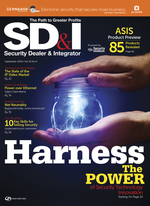
We're Surrounded
It's no secret that megapixel cameras have taken the market by storm, providing the ability to see more with fewer cameras, with progressively better video quality and digital PTZ features. Conversely, fish eye lenses providing up to 360 degree images of varying quality have been around for years. So, it's not surprising that the combination of high pixel density sensors and appropriate lenses, enhanced by sophisticated image processing algorithms, has led to expanded product offerings in really good 180 degree and 360 degree panoramic IP cameras. Let's take a closer look at these three elements to see how they have combined to create this growing class of products.
read more -->

UPS and Downs
Since early in time, back up batteries have been a fact of life in intrusion, access and even CCTV systems. Whether it is in a local panel or as part of a power supply enclosure, batteries serve the function of maintaining power during a limited duration power outage. UL standards cover these, requiring 4 hours for access control (UL294), 12 or 24 hours for intrusion (UL 603 and UL 1076), and 24 hours for fire (UL 864 and UL 1481). If video systems are used as sensors in these systems, they may full under the umbrella of these, also.
Uninterruptible power supply (UPS) systems provide protection beyond batteries, supplying line level voltage to certain end devices or to power supply panels themselves. If the power supply itself has battery backup, there is additional redundancy.
Let's examine some design considerations for these systems and features worth considering.
read more -->

Consumer Market Guinea Pigs
Two articles about advances in consumer-focused technologies have caught my eye recently. While neither was written with the theme of physical security, I nevertheless saw their topics as potential game changers in our market: Wearable cameras and software that tracks facial expressions to predict future behavior.
read more -->

SFP Finally Moving into Security
You may remember the early days of fiber optic transceivers, where, in addition to specifying the function that was needed - for example, RS-232 to fiber optic - you had to define wavelength, number of fibers, connector type and possibly optical budget. In addition, there might have been the choice of end-point, repeater or multi-port star or hub. All of this made for a dizzying array of part numbers and complicated the specification, ordering and stocking of transceiver products.
read more -->

Thermal Imagers: Shrink Wrapped
A new generation of thermal devices open up a potential new set of sensing possibilities, raise awareness, and, perhaps most importantly, put low power thermal imaging into the hands of gadgeteers and tinkerers around the world to conceive new interesting applications.
read more -->

Raising the Bar(s) in Wireless
One of the consistent trends we’ve seen in networking is the continuous increase in network speeds. In wired networks, more devices are appearing with 10 Gbps capability, while 40 Gbps and 100 Gbps equipment is on the horizon.
read more -->
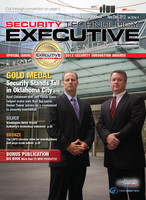
Avoid PoE Woe
One of the really nice innovations in the industry has been the adoption and widespread availability of Power over Ethernet (PoE)-enabled devices, powered over the same Cat 5e (or better) cable carrying Ethernet. It is so easy that the technology can be taken for granted and important considerations overlooked.
read more -->

Video Storage: Take a Big Byte
Terabytes, petabytes, exabytes, zettabytes, brontobytes...what’s our security world coming to?
When you combine the trends of more surveillance cameras, higher bandwidth requirements, fatter bandwidth pipes and the continuing decline in storage costs, you get near-exponential growth in bytes stored. The question is, how do we manage this vast amount of video data? I’ve discussed this question with several large-scale storage vendors recently and learned some very interesting things.
read more -->
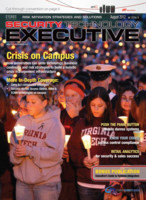
Laser Tag
Remember the days of the simple photo-electric cell? Using either a transmitter-receiver pair or a single TX/RX with a retro-reflector, the interruption of an IR beam would trigger an alarm, stop a process, or simply act as an input to another process. We have come so far!
Today, using laser technology, a beam can be emitted into free space, reflect off an object, and, upon returning, provide the input to calculate distance of the object based on its flight time. Compound that with the fact that the beam is scanning continuously over a pre-determined arc travelling at 386,000 miles per second and you’ve got something interesting. Some refer to this technology as LIDAR (Light Detection and Ranging), based on the same concept as RADAR, but using laser light instead of radio waves. Because laser light is higher in energy and shorter in wavelength than radio waves, it reflects better from non-metallic objects and provides mapping advantages over RADAR.
read more -->

Go to the Replay
The industry is getting smarter in realizing that the information captured on video equipment may be useful in non-traditional security or non-security applications, including retail assessments, crowd patterns, patient care and monitoring, employee behavior, operations assessment, litigation mitigation and more. Assuming any of these are conducted within legally accepted boundaries, the net effect is to deliver enhanced business-related ROI from the security department. Of course, this presumes that the information useful and relevant, and that security people and their IT and business counterparts are able to work together to connect the dots.
read more -->
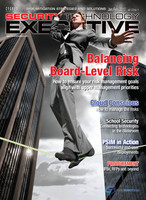
In-Depth on NFC
Much has been written about Near-Field Communications (NFC) for consumer transactions; however, NFC is still so new that I want to address it in a broader security context and, hopefully stimulate some creative thinking. In my opinion, multiple security applications are waiting to be developed.
NFC is an RFID standards-based wireless technology, operating at 13.56 MHz over extremely short distances (less than 2 inches). When designed into a smartphone, it is capable of enabling data transfer between the phone and a companion device. The Nokia model 6131 was the first NFC phone, introduced in 2006. The predominant application driving this technology has been electronic payment as a follow-on to contactless smart cards, and manufacturer interest has been significant, as witnessed by the growth of the NFC Forum (www.nfc-forum.org) — founded in 2004 by Nokia, Philips and Sony — to more than 135 members today.
read more -->

Getting Beneath the Surface on Biometrics
Biometrics is one of those areas of security technology whose roots go back a ways, but whose best days are yet to come. I can remember getting fingerprinted prior to my Air Force ROTC summer camp years ago (won’t say how many); and taking my kids to the local police station to get their prints on file — for all the right reasons, I might add.
Since then, fingerprint technology has subtly made its way into our daily lives through consumer products, which drive technology acceptance and lower costs. How many of your laptops have a fingerprint reader on them? It has become quite common.
Beyond, electronic scanning now captures multiple fingers, single finger rolls and flat features. It has been provisioned in mobile applications and in harsh environments, allowing for quicker identification and apprehension of criminals. Fingerprint reading is the granddaddy biometric on steroids. And biometric technology has spread…along several dimensions.
read more -->
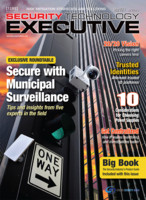
New Alternatives in Ethernet Media
As Ethernet networks have moved to becoming the norm for IP-based transmission of video, audio and data signals, I wanted to examine some alternatives for transmission.
By now, most of us are familiar with common Ethernet media — Cat 5e, Cat 6, fiber optic cable, and WiFi. Today, Cat 5e and Cat 6 are the baseline means for Ethernet transmission, at least for horizontal cabling to the wiring closet. This cable is relatively inexpensive and well-understood.
But what if running new copper or fiber media is problematic, due to facility or budget constraints, and the conditions for wireless are not right for reliable deployment? Alternatives exist.
read more -->
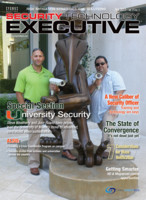
Power Play
What comes to mind when you ask “What do CCTV, access control, intercoms, doors, contact closure modules all have in common?†One possible answer is IP connectivity. Now, you can add the ubiquitous power supply to the list. One company at least — Life Safety Power — has made IP-based features a signature element of its product line, and, given the likely advantages, I expect more to follow.
Form C contacts have been around since the dark ages — extensively used, reliable and necessary, a bit like analog video in the surveillance industry. It is well within today’s design technology to pull critical data from power supply circuitry. In addition to AC input or DC output failure and low battery supervision, there are numerous other monitoring possibilities, including actual voltage levels and their variability over time; current draw per output circuit; actual battery voltage and trend data; charging current; battery age and history; fault history and tamper events. All could be reported via SNMP or e-mail. Since power supplies are the lifeblood of most devices, timely e-mail and text reporting of device status can resolve problems quickly or prevent problems from occurring through pre-emptive action.
read more -->

